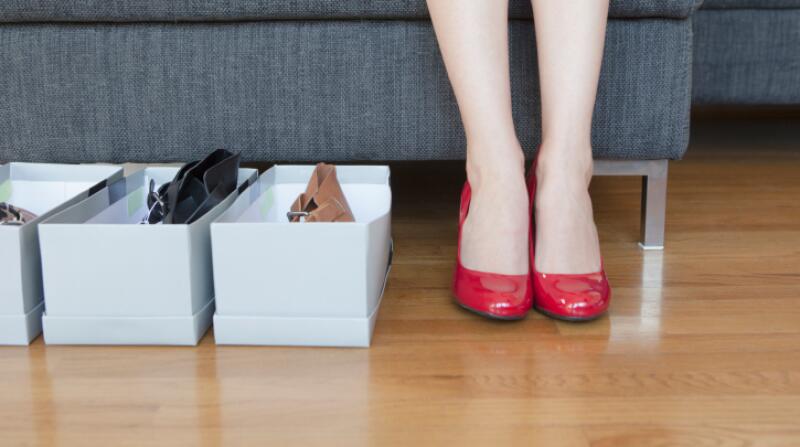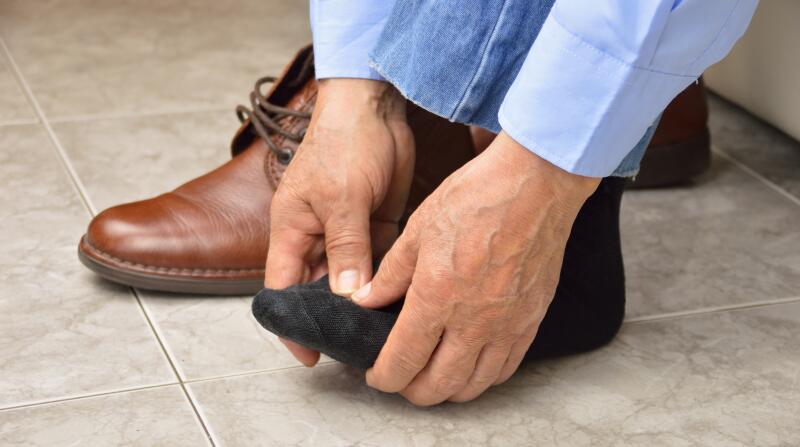9 Things to Know About Bunions

Medically Reviewed By William C. Lloyd III, MD, FACS
Written By Cindy Kuzma on April 11, 2021
-
 A Closer Look at Bunion Causes and TreatmentsWith each step you take, much of your body weight lands on the joint at the base of your big toe. In about 1 of 4 adults, the pressure eventually forces this joint out of place. A painful bump made of bone and soft tissue, called a bunion, forms and pushes the big toe toward the others. Though bunions can cause significant pain and even foot deformity, a wide range of treatment options offer relief.
A Closer Look at Bunion Causes and TreatmentsWith each step you take, much of your body weight lands on the joint at the base of your big toe. In about 1 of 4 adults, the pressure eventually forces this joint out of place. A painful bump made of bone and soft tissue, called a bunion, forms and pushes the big toe toward the others. Though bunions can cause significant pain and even foot deformity, a wide range of treatment options offer relief. -
 1. If the shoe doesn’t fit, you might get a bunion.Most bunions form after years of wearing shoes that squeeze your toes into unnatural positions. This includes footwear with pointy toes, narrow toe-boxes, or high heels. Other causes include foot injuries, arthritis, and jobs or hobbies that place high demands on your feet (for instance, ballet dancing).
1. If the shoe doesn’t fit, you might get a bunion.Most bunions form after years of wearing shoes that squeeze your toes into unnatural positions. This includes footwear with pointy toes, narrow toe-boxes, or high heels. Other causes include foot injuries, arthritis, and jobs or hobbies that place high demands on your feet (for instance, ballet dancing). -
-
 2. Women have a greater risk of forming a bunion.Nine out of every 10 bunions occur on female feet; in fact, 1 in 3 women will eventually develop them. And it’s no wonder: A recent study by the American Orthopaedic Foot and Ankle Society found nearly 9 in 10 U.S. women wear shoes that are too small. Your foot size changes as you age, so it’s worth checking the size of your feet at the shoe store. If you tend to buy shoes online, take into account the shoe width and whether they tend to run large or small, and use the retail’s return policy if they don’t fit right.
2. Women have a greater risk of forming a bunion.Nine out of every 10 bunions occur on female feet; in fact, 1 in 3 women will eventually develop them. And it’s no wonder: A recent study by the American Orthopaedic Foot and Ankle Society found nearly 9 in 10 U.S. women wear shoes that are too small. Your foot size changes as you age, so it’s worth checking the size of your feet at the shoe store. If you tend to buy shoes online, take into account the shoe width and whether they tend to run large or small, and use the retail’s return policy if they don’t fit right. -
 3. They’re not necessarily inherited.Don’t rush to blame your parents for your bunions. Heredity plays only a small role. And bunions themselves aren’t passed down through generations—though flat feet, low arches, and other types of feet prone to forming them may be. If your ancestors suffered from bunions, you may have even more reason to avoid too-tight shoes or too-high heels.
3. They’re not necessarily inherited.Don’t rush to blame your parents for your bunions. Heredity plays only a small role. And bunions themselves aren’t passed down through generations—though flat feet, low arches, and other types of feet prone to forming them may be. If your ancestors suffered from bunions, you may have even more reason to avoid too-tight shoes or too-high heels. -
 4. They don’t occur just in older adults.Though many consider bunions a condition of old age, even teens can develop them. Most often, this occurs in girls ages 10 to 15. Unlike adults with bunions, teens can usually move their toe joint. Wearing wider shoes or getting your adolescent’s shoes stretched often brings relief. You can ask a shoe repair place to stretch them or buy a stretching device at a retail store and do it yourself.
4. They don’t occur just in older adults.Though many consider bunions a condition of old age, even teens can develop them. Most often, this occurs in girls ages 10 to 15. Unlike adults with bunions, teens can usually move their toe joint. Wearing wider shoes or getting your adolescent’s shoes stretched often brings relief. You can ask a shoe repair place to stretch them or buy a stretching device at a retail store and do it yourself. -
 5. Without treatment, bunion pain can limit your life.The base of the big toe bears much of the impact when walking. If bothersome bunions aren’t treated, the toe joint can stiffen and become extremely painful. For some people, the pain and deformity makes wearing shoes difficult or impossible. It can also make walking more than a few blocks nearly unbearable, and can lead to arthritis.
5. Without treatment, bunion pain can limit your life.The base of the big toe bears much of the impact when walking. If bothersome bunions aren’t treated, the toe joint can stiffen and become extremely painful. For some people, the pain and deformity makes wearing shoes difficult or impossible. It can also make walking more than a few blocks nearly unbearable, and can lead to arthritis. -
-
 6. Home remedies can relieve some of the pain.Better news: Simple, everyday therapies prevent pain from turning chronic. You can buy a nonmedicated bunion pad at the drugstore to cushion the bony growth. Night splints can balance the pull of the ligaments surrounding the bunion while you sleep. Applying ice packs can ease swelling and pain during the day.
6. Home remedies can relieve some of the pain.Better news: Simple, everyday therapies prevent pain from turning chronic. You can buy a nonmedicated bunion pad at the drugstore to cushion the bony growth. Night splints can balance the pull of the ligaments surrounding the bunion while you sleep. Applying ice packs can ease swelling and pain during the day. -
 7. Fast help from a foot doctor works wonders.Even if you can control the pain yourself, it’s best to see a podiatrist at the first sign of a bunion. Early treatment can reduce your risk of more pain and extensive interventions later on. A foot doctor might prescribe anti-inflammatory drugs or orthotics, recommend physical therapy, or apply ultrasound treatments to help with healing.
7. Fast help from a foot doctor works wonders.Even if you can control the pain yourself, it’s best to see a podiatrist at the first sign of a bunion. Early treatment can reduce your risk of more pain and extensive interventions later on. A foot doctor might prescribe anti-inflammatory drugs or orthotics, recommend physical therapy, or apply ultrasound treatments to help with healing. -
 8. Not everyone needs surgery—but some people benefit from it.Most bunions can be treated without an operation. But in some cases, you might benefit from a bunionectomy or a similar procedure. Some surgeries remove only the bony growth, while others also cut bone, tendons, ligaments and nerves to realign the joint. Your doctor can explain your options and what to expect after surgery.
8. Not everyone needs surgery—but some people benefit from it.Most bunions can be treated without an operation. But in some cases, you might benefit from a bunionectomy or a similar procedure. Some surgeries remove only the bony growth, while others also cut bone, tendons, ligaments and nerves to realign the joint. Your doctor can explain your options and what to expect after surgery. -
 9. Experts continue to study new treatments.Scientists hope to find more noninvasive treatment methods for less severe bunions. In a recent study, many patients responded well to injections of botulinum toxin—the same type used for cosmetic procedures. Talk with your doctor about newer treatment options if your bunion doesn’t get better with conservative therapies.
9. Experts continue to study new treatments.Scientists hope to find more noninvasive treatment methods for less severe bunions. In a recent study, many patients responded well to injections of botulinum toxin—the same type used for cosmetic procedures. Talk with your doctor about newer treatment options if your bunion doesn’t get better with conservative therapies.
9 Things to Know About Bunions












